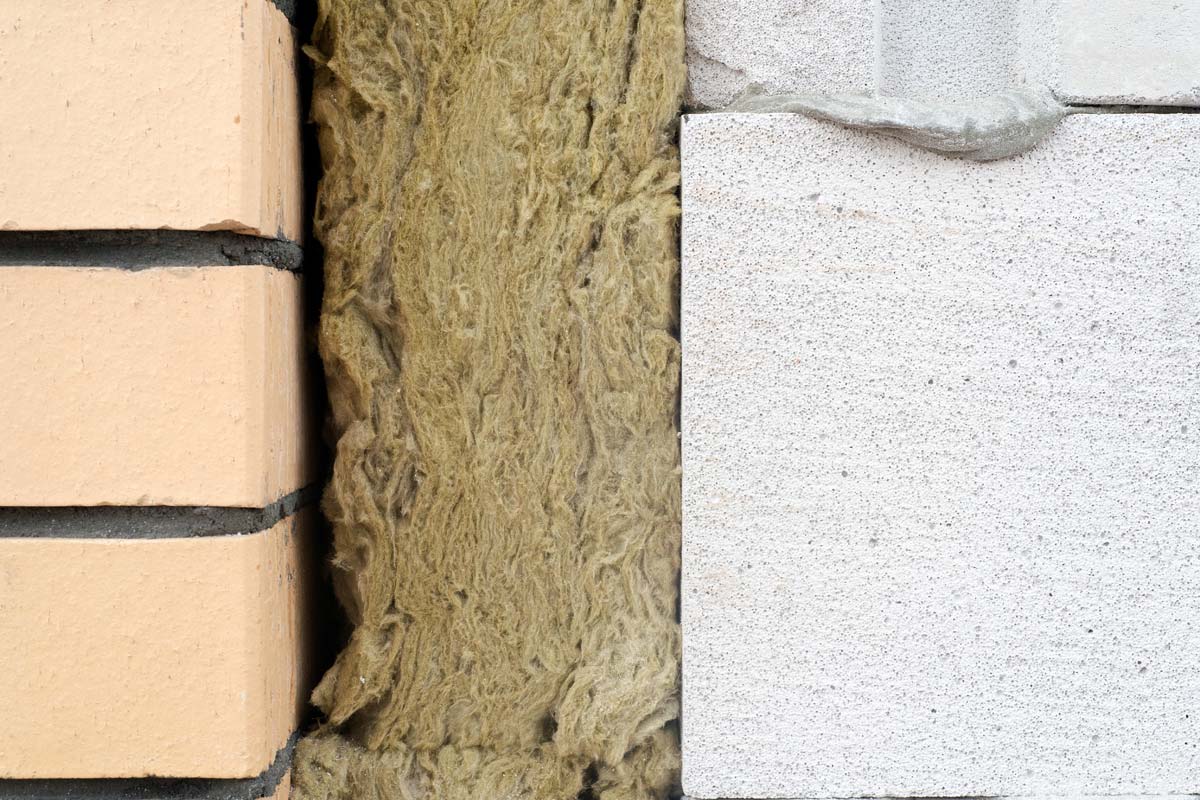What is cavity Wall ?

What is Cavity Wall ?
If your house was built after the 1920s, it is likely to have cavity walls . A cavity wall is the External Wall which is made up of two walls with a gap in between, known as the cavity; the outer leaf is usually made of brick, and the inner layer of brick or concrete block. Metal ties join the two walls together (see both pics).
Pre-1920 older houses are more likely to have solid walls . A solid wall has no cavity; each wall is a single solid wall, usually made of brick or stone. Please refer to Internal Wall Insulation for these properties.
How can I tell if I have cavity walls?
Since the early 1920’s many house walls have been constructed of two masonry (brick or block) walls, with a cavity (gap) of at least 50mm between. A cavity wall can generally be recognised by it’s thickness (more than 11.5?), or by the brick pattern. The presence of end bricks in the face suggests that the wall may not contain a cavity and is not suitable for cavity wall insulation.
If unsure, our Surveyor can identify during the survey inspection, and if necessary – carry out a boroscope check on your wall and put a camera inside it to see if it is suitable to get Cavity Wall Insulation.
What is Cavity Wall Insulation?
Cavity Wall Insulation is Insulating material which is placed in the gap between the inner and outer wall of your property, making it more energy-efficient.
Our preferred insulating material is a bonded EPS bead system due to its durability, low thermal conductivity and moisture resistance.
Expanded Polystyrene (EPS)
It is a lightweight cellular material consisting of fine spherical shaped particles which are comprised of 98% air and 2% polystyrene. Expandable polystyrene is a rigid cellular plastic containing an expansion agent called pentane.
Low Thermal Conductivity: the material has a long term R-value meaning it is resistant to heat flow making it an ideal product for thermal insulation.
Low Water Absorption: EPS bead does not absorb moisture and its thermal properties are not affected by damp, humidity or moisture. Its closed cell means it cannot absorb water and bead will maintain its shape, size, structure and appearance.
Ageing Resistance: all the above properties are retained over the materials life and will last as long as the building itself.
Why do I need Cavity Wall Insulation?
1) Over a third of all the heat lost in an uninsulated home escapes through the walls:-
2) Saves you money on your Energy Bills (up to £275 per year).
3) Keeps your home warmer – less heat escaping through the externals walls.
4) Reduces your Carbon Footprint helping the environment.
5) No.1 recommendation on an EPC (Energy Performance Certificate) to improve energy efficiency.
Is my house suitable for Cavity Wall Insulation?
Before the installation, M3 Energy Scotland will organise a Surveyor to attend site at a suitable date and time to carry out an assessment of your property to confirm that it is suitable for insulation. This assessment will also be double checked by the actual Installer before installation.
Do I have to do anything before the installation?
The drilling process does create some vibration – so it would be wise to remove ornaments, particularly on external walls, for their safety and your peace of mind.
The Technician will need access to all walls, so he will need to get inside attached garages, lean-to sheds, conservatories etc. The insulation can only be really effective if all walls are done. If you have a wall right on the boundary, you may like to mention to your neighbour, that the Technician will need to go onto their property.
How is the Cavity Wall Insulation Installed?
Cavity wall insulation normally takes around 2-3 hours to install, but the time does depend on the size of the house and other factors, such as access.
To insulate your cavity walls, the installer drills small holes around 22mm in size (10p Coin) through the mortar in between the bricks at specific intervals on the outside wall of your home (see Drill Pattern below).
The installer then inserts the insulation into the wall cavity using special equipment.
Each system has a defined pattern of holes (see below), which is injected in turn starting from the bottom and is tested to verify that it results in a complete fill. Most systems have an automatic cut out, which actuates when the adjacent wall area is full. There is tolerance in the injection pattern so that the material will flow past the next injection hole.
All the holes through which the insulation is injected are filled with mortar to match the existing color and texture as closely as possible. On pebbledash finishes, pebbles are added to the surface to match the existing finish. After weathering, the holes are difficult to see.

How Eco Scheme Works ?

How it All Works:
1. You would Select “Apply Now” to get a Free Survey on our homepage.
2. You would complete a quick questionnaire to see if you qualify for the ECO Scheme.
3. We give you a call to arrange a convenient date and time to visit your property to do a survey.
This will include checking your property for all possible Free Energy Upgrades. Normally takes 20-30mins.
4. We will attend site and identify ourselves through our ID Badges and Company Uniforms – We will carry out a full survey of the property, including completing the HHCRO Benefit qualifying forms for the ECO Scheme, and will also require proof that you are currently on benefits, and proof of residence.
5. All this information from the Survey would be passed onto our accredited and experienced installers.
6. They will carry out a “Datamatch Check” to confirm with DWP that you are currently on the correct HHCRO Qualifying Benefits.
7. Once Datamatch Check confirmed - The installers will contact yourself to arrange a suitable date and time for the Installers to visit.
Installations can usually be carried out approximately 1-2 weeks after survey.
8. Our fully trained and experienced installers arrive and carry out all work required.
9. The installers deal with all the paperwork and completed submissions to the Energy Companies to get paid for all the work completed under the ECO Scheme.
10. The Installers will then arrange to have all guarantee certificates sent direct to you (normally 2-3 months later).
Dont qualify for ECO Funding? Then maybe we can help offer finance to you?
M3 Energy Scotland Ltd arrange the Finance for you, and we are offering a wide range of finance solutions including:
- 0% interest free finance
- A range of APRs to suit your products
- Up to 10 years finance
- Finance available for all home improvements
Home improvement measures we finance:
- Boilers and heating controls
- Kitchens and bathrooms
- Windows and doors
- Garden offices
- Solar PV
- External wall insulation
- Loft and cellar conversions
- Drives and gates
- Central heating systems
- Conservatories
- Roofs and sky lights
- ALL renewable technologies
- Internal wall insulation
- Hot tubs
Interest Free Finance
M3 Energy Scotland Ltd is an Appointed Representative of Improveasy Ltd.
A company registered in England and Wales (Co. Reg. number 7807352).
Registered Office: Manchester Business Park, 3000 Aviator Way, Manchester M22 5TG.
The firm is authorised and regulated by the Financial Conduct Authority (FRN 708623).
The firm is authorised as a Broker, not a Lender, and offers credit facilities from a panel/one lender.
The credit is subject to application and status.
For Customer Complaints Policy please click here
For Privacy Policy please click here

